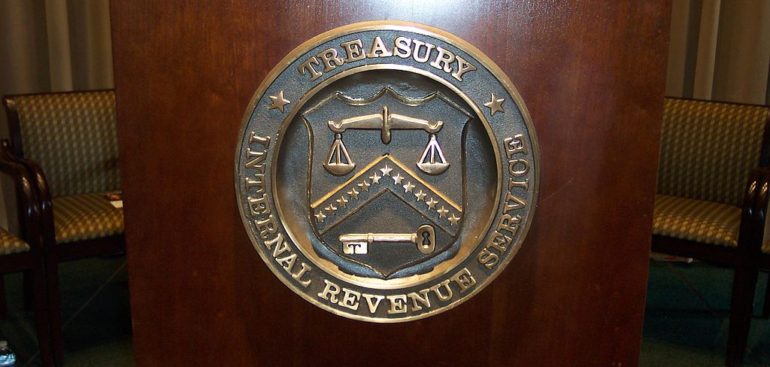The whole world has been in the grasp of the Coronavirus for the past two years. During this time, the government has done many things to try and aid people financially. There have been three different stimulus checks sent out, the federal government provided extra money for unemployment benefits on top of what the states normally provided, and they provided many other funding programs to assist those who were struggling financially. They even recently made $10,200 of the unemployment compensation that a person received during 2020 tax-free.
The IRS also took a huge step back in collection activities and even suspended many active installment agreements. Beginning in 2020 however, they gradually resumed collection efforts but still left many of their collection systems idle including involuntary collections such as garnishments and levies.
In June of this year, the IRS released a notice stating they felt that the current economic situation deemed that they could resume full collection activity to maintain a fair and just taxing system. So, they began sending collection letters on June 15th. A sequence of letters is usually sent notifying the taxpayer where they are in the collections process in order to give the taxpayer an opportunity to either pay the tax debt, work out some sort of payment arrangement with the IRS, or hire representation to enforce their rights on the repayment of the tax debt.
The Notice of Balance Due
Typically, the sequence of these letters would begin with the filing of the taxes on or before April 15th. Once the IRS processes your tax return or if the IRS has made a change to your return, an initial notice is sent out. This is called a Notice of Balance Due and will either be a Notice CP501, CP503, or CP504. This year, the IRS started sending out these notices on June 15th.
These are not threatening letters. The notices explain how much you owe, when your payment is due, and your payment options. It also tells you how to contact them if you disagree with the amount owed. At this point, you can request a collection due process hearing using Form 12153.
You typically have 30 days from receipt of the first letter to dispute the debt with the IRS. Afterward, notices are sent sequentially every 4 weeks until the balance is paid in full. If not, the IRS will begin taking collection action.
At this point, you have a few options. If you can afford to pay the tax debt in full, that is always the best course of action. Anytime there is an outstanding debt with the IRS, it is subject to penalties, fees, and interest that typically continue to accrue until the debt is satisfied.
If you cannot pay the balance in full but you do have the means to pay over time, there are short-term and long-term payment arrangements available.
If you do not have the income to support the payment required in these plans, there are also hardship programs available. If an inability to pay can be proven, you may qualify for a reduced payment or even a full-on hardship status, otherwise known as a “currently non-collectible” status or CNC. In a CNC status, you will not be required to make a payment on the tax debt until your financial situation improves and you can afford to pay.
Another hardship program that is available with the IRS is the Offer in Compromise. This is where the IRS may agree to accept a lesser amount than what is owed and forgive the remainder of the tax debt.
A taxpayer can absolutely deal directly with the IRS on their own and try to take advantage of any of these programs. Like everything else in life, you can take a chance and try it on your own or you can hire a tax professional that does this every day and is thoroughly knowledgeable about tax law and the taxpayer rights involved.
The Notice of Intent to Levy
If a taxpayer ignores these letters and does not either hire representation to respond to the IRS or contacts them directly, they will then receive a Notice of Intent to Levy, known as Notice CP504. The IRS may give you this notice in person, leave it at your home or place of business, or send it to your last known address by certified or registered mail.
This Notice of Intent to Levy is an important step and one to be taken seriously because it satisfies the requirement of the government to notify the taxpayer before it begins seizing assets. Interestingly, there is no actual requirement stating that the letter must be received by the taxpayer. If the IRS mails the notice to the taxpayer at their last known address, that action satisfies their legal obligation and they can then pursue collections. But until this notice is sent, the IRS cannot use involuntary collections against a person.
A Notice of Intent to Levy may appear to be very threatening but it is not meant to scare a taxpayer to pay the amount they owe. It is simply a legal notice from the IRS stating that they plan to use involuntary collections to collect on the tax debt.
If a taxpayer has received this notice, their situation is now very serious. This is the point when a taxpayer must either take steps to resolve the matter directly with the IRS or hire representation because the IRS is literally telling the individual what they are about to do–enforce collections.
If the taxpayer does not respond to this notice, the taxpayer’s case is either sent to the Automated Collection System (ACS) or to a Revenue Officer for collections. Some accounts may initially be assigned to ACS only to be transferred to a Revenue Officer later.
The IRS Automated Collection System
The Automated Collection System is comprised of many large call centers located in multiple cities where ACS Agents take incoming calls from taxpayers, review cases, and issue notices of tax debt and collection actions on behalf of the IRS. Most tax debts below $100,000 are assigned to ACS.
The cases that are in ACS are not assigned to specific agents but exist within the system and are fielded by agents when the need arises. The system uses a computer program that ranks and selects tax debts based on the amount owed and the age of the debt. This means that the collection process of the ACS can be very sporadic.
I have helped clients that owed large amounts of money to the IRS and also had unfiled taxes but somehow flew under the radar of the ACS for years. I have also spoken to many sweet little old ladies living solely on social security income barely making it by that owed very small balances to the IRS but were being garnished. So, there is no real rhyme or reason as to who the system selects and who flies under the radar.
The Automated Collection System contains computerized records of a taxpayer’s sources of income and assets such as their wages, bank accounts, certificates of deposit, and accounts receivable, all of which can be seized administratively from them. Since the Notice of Intent has already been sent to the person, the system can issue wage garnishments and bank account levies without any further warning.
ACS may also file a Federal Tax Lien against a taxpayer to secure their interests in any property that they may hold. The lien is put in place so that if the taxpayer tries to sell or refinance a property such as their house, the IRS will receive the proceeds to pay the tax debt.
When a Revenue Officer Gets Involved
If ACS is unable to recover the debt, the debt may then be assigned to a Revenue Officer for further collections. In cases that involve large tax debts of $100,000 or more, the case typically goes directly to a Revenue Officer and completely skips ACS. If you get to this point in the process and a Revenue Officer has been assigned to your case, there is no more ignoring the situation.
A Revenue Officer also gets involved when the tax debt stems from payroll taxes. If an employer withholds taxes but does not turn them over to the IRS, this is generally viewed by the IRS as stealing. If not paid upon demand, these debts are typically assigned directly to a Revenue Officer.
Revenue Officers have the power to issue summons to a taxpayer or business and demand the taxpayer show up at their office at a certain time with records in hand. They are also usually local and can make surprise visits to a taxpayer’s home or place of employment. If you refuse to respond to a Revenue Officer, they can involve IRS district counsel who then can get a court order and force you to comply with the summons.
If your case gets to this point, it is at the highest level within the IRS Collections System and I highly recommend that you hire a legitimate tax professional immediately to represent you or your business.
Be Proactive, Not Reactive
Throughout my time in this industry, I have dealt with many different types of people. I have always used one main classifier to describe how a person deals with the IRS: a taxpayer is either proactive or reactive.
Proactive people don’t get themselves into these types of situations or if they do they immediately deal with the situation when a notice arrives. During this part of the collections process when notices are being sent, you have a lot of rights. You can either deal directly with the IRS on your own or hire a true tax professional to represent your rights in the collections process.
Then there is the reactive person. This is the type of person that ignores all of the IRS letters either out of fear or with the thought that the IRS really won’t do anything about their debt. This type of taxpayer tries to deal with the situation after the IRS has begun a garnishment, froze their bank account, or a Revenue Officer is knocking at their door. At this point, they still have rights but these cases are much harder to deal with.
The most important piece of advice I can give is to be proactive when it comes to dealing with the IRS. In their recent budgets, the government has allocated extra funding to the IRS to enhance their collections, so the chance of flying under the radar is a lot lower now.
And if you do have a large tax debt, it will always financially benefit you to hire a legitimate tax professional to be your advocate.
If you have received a notice from the IRS or they have already begun taking collection action against you, contact us today for a free consultation so that we can protect your rights and finances and help you resolve your tax issues ASAP.



